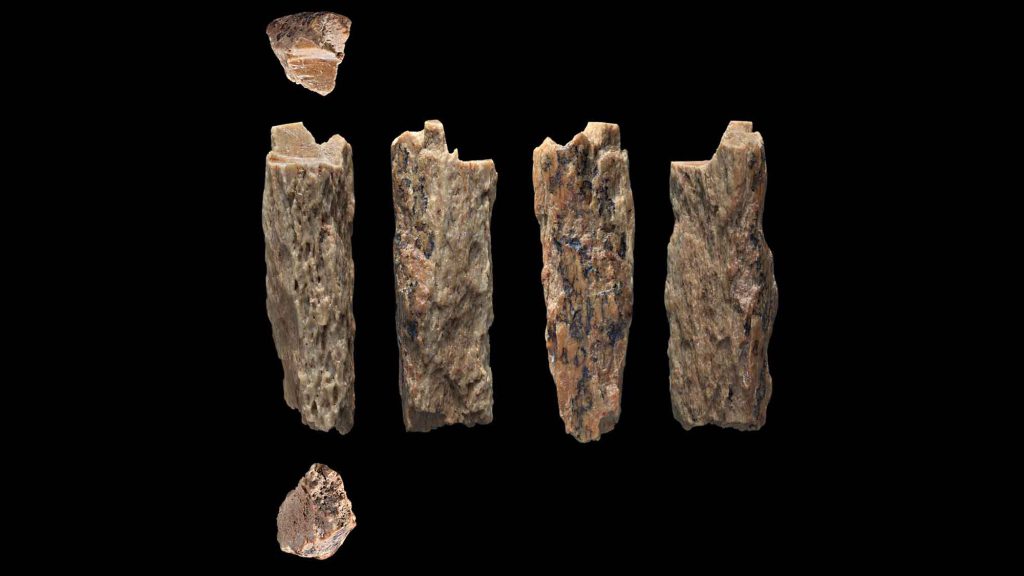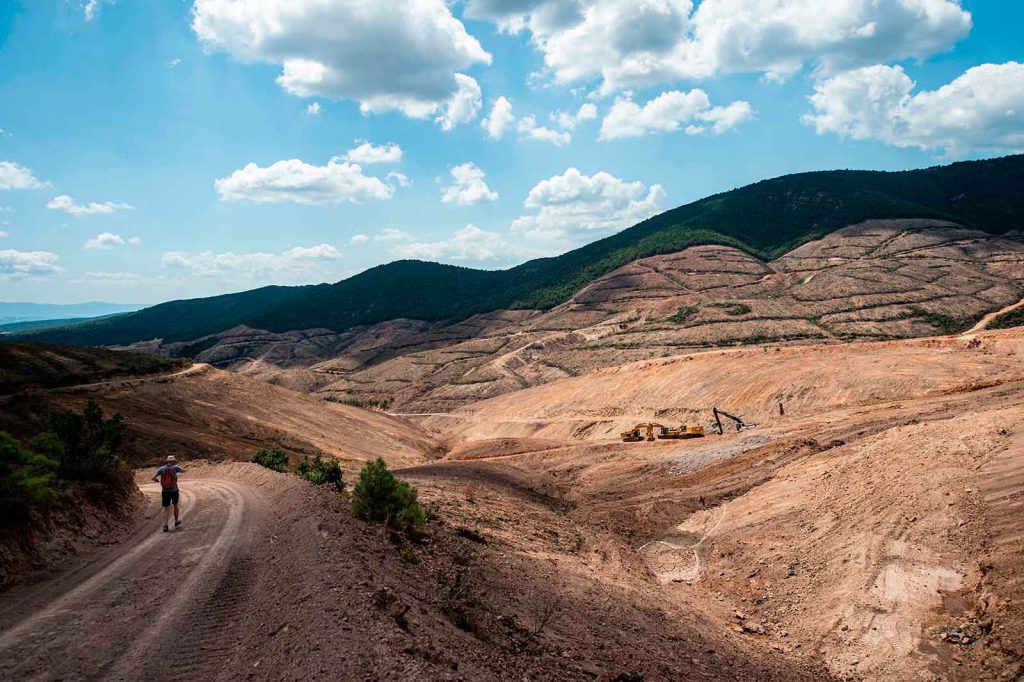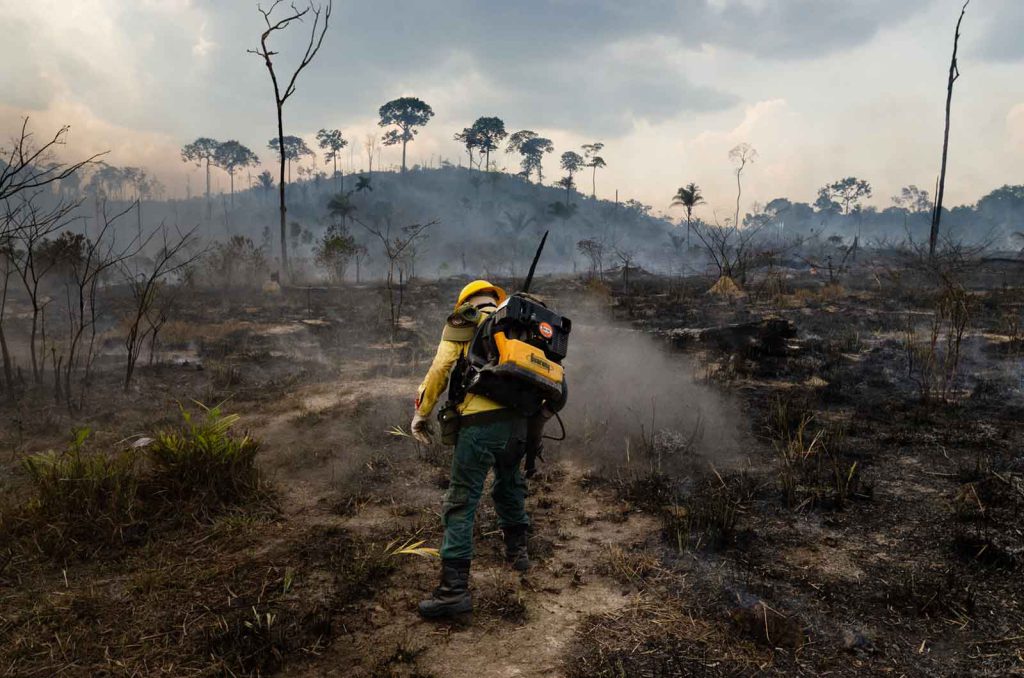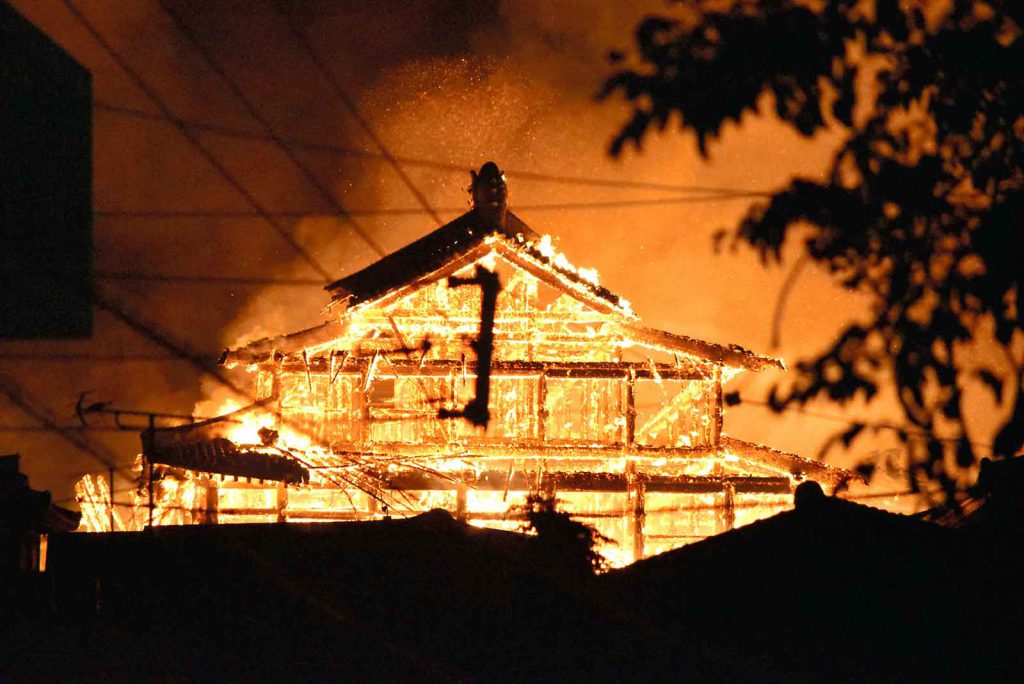Humans in 2019—From Discoveries to Disasters

Denisovan Deluge
This year brought a host of discoveries that helped pull back the curtain on one of our most mysterious hominin cousins: the Denisovans. This sister group to Neanderthals parted ways with modern human lineages about 400,000 years ago. The group was identified in 2010 from a handful of remains found in a single Siberian cave: mainly a pinky finger bone and some teeth. This year saw the entire guest list to that cave worked out, the first confirmed piece of a Denisovan skull described, and the first pieces of Denisovan remains found outside of Siberia—a jawbone in China. These finds are helping to answer questions about what Denisovans might have looked like, how extensive their population was, and how they might have interacted with other hominins of the time.
Moon Monitors
People first landed on the moon 50 years ago; this year China added to that accomplishment by being the first to land an uncrewed craft on its far side. The appeal of space exploration is widespread, and anthropologists are no exception. Two prominent books about space and its intersections with archaeology were published this year: Sarah Parcak’s book Archaeology From Space takes readers on a tour of how satellite photos help us understand the Earth and its human history, and Alice Gorman’s book Dr. Space Junk vs. the Universe does the opposite, looking up at the stars, examining humanity’s role in space, and cataloguing the objects that humanity has littered off our own planet. Meanwhile, the nonprofit For All Moonkind continues to push the United Nations for formal protection of lunar heritage, including Neil Armstrong’s footprints.
Defining the Anthropocene
We live in a world transformed by human activity: People have significantly impacted 75 percent of the planet’s landmass and are the dominant force determining everything from species extinctions to the planet’s temperature. A decade ago, geologists proposed that the age of human influence, the Anthropocene, should be granted formal status as a geological epoch. Now anthropologists are helping to identify what defines this new age. A collaboration of archaeologists this year sketched out humanity’s impacts on our planet over 10,000 years and found that our footprint (clearing forests, lighting fires, and more) was global by 3,000 years ago—much earlier than had been generally assumed by Earth scientists. The Anthropocene might not be such a recent phenomenon after all.
Climate Emergency
2019 saw a broad social awakening to the problems of climate change and sustainability, driven in part by anthropologically informed groups like Climate Mobilization, and spurred notably by Swedish teenager Greta Thunberg’s impassioned speeches and school strikes. As anthropologists have noted, messages can be heard differently, perhaps more acutely, when delivered by young, less-often-heard voices. Along these lines, the activist group Extinction Rebellion held a meeting, along with anthropologists and climate scientists, deep in the Amazon in order to elevate Indigenous voices from that region. Meanwhile, prominent agencies such as the Intergovernmental Science-Policy Platform on Biodiversity and Ecosystem Services officially acknowledged the effectiveness of Indigenous groups on land stewardship, backed by anthropological assessments of Indigenous worldviews on sustainability.
Amazon Alight
The press lit up with stories about fires in the Amazon this August as São Paulo’s skies were darkened with smoke. But the story was more complicated than it first seemed. There were actually far fewer fires in Brazil in 2019 than in the early 2000s (although more than in 2018). Tropical forests like these don’t typically experience wildfire; these fires were lit to clear or refresh land for farming and cattle ranching. The 2019 jump in fires in Brazil may have been due to laxer enforcement under new President Jair Messias Bolsonaro. Some Indigenous communities have long used fire to manage their lands. Today the practice is on a much larger scale, and land grabs by corporations and elite groups have come at the expense of many local communities. The fires were deemed an environmental travesty by the world’s press: They release carbon into the atmosphere, pollute the local air with soot, and consume Indigenous territories. But as one anthropologist noted, many Brazilians are resentful of foreign interference in their land-use decisions and understandably keen to improve their standard of living.
Threats to Heritage
Archaeologists were up in arms this year over a new international airport slated for Chinchero, Peru—both because the airport site itself has not been sufficiently investigated for archaeological remains and because of the increasing threat of heavy tourism to Machu Picchu. Anthropologists are among the many people (98,800 and counting) who have signed a petition.
Meanwhile, archaeologists reported concerns that the fires in the Amazon may have obliterated some rock paintings. The National Park Service in the U.S. has noted that a section of the planned U.S.-Mexico border wall is expected to destroy more than 20 archaeological sites in Arizona’s Sonoran Desert. Fires devastated the Notre Dame Cathedral in France and the Shuri Castle in Japan. And the wars in Syria and Yemen continue to destroy heritage amid the horrendous violence to people.
Help for Heritage
Several prominent efforts were launched this year to help preserve natural and cultural heritage—or at least to record it. Archeologist Chris Fisher and colleagues, for one, introduced the Earth Archive, a project aiming to scan the entire land surface of the planet with lidar (light detection and ranging technology). This tool, typically flown on a plane, drone, or helicopter, can take images that see through vegetation to evidence of archaeological structures that may lie beneath. The effort is still trying to raise the cash required for the massive undertaking but hopes to start with a scan of the Amazon in 2020.
Meanwhile, the J. Paul Getty Trust announced it would invest US$100 million in projects aiming to save antiquities that are in danger of theft or destruction due to war and climate change. And the Digital Syria project was launched, joining the Syrian Heritage Archive Project, to help record and protect that country’s landscape and structures.
Gun Violence
There were at least 395 mass shootings in the U.S. in 2019: more than one, on average, for every day of the year. (A “mass shooting” is defined in this context as an incident in which “four or more [are] shot or killed, not including the shooter.”) That’s the highest this statistic has been in at least five years. This year also brought, of course, the tragic Christchurch mosque shootings in New Zealand. Anthropologists are at the forefront of investigations into the how, why, and who of gun violence—not just the shootings themselves but also the long-term impacts of the pervasive threat of violence on human health and well-being, even for people who have never heard a shot. Stories of gang warfare from cultures outside the United States, like Haiti, also shed revealing light on the issue. The simplistic debate between whether guns kill people or people kill people ignores the complex interplay between technology and humanity: A person and a gun may be more than the sum of its parts.
Genomic Gold Mines
Discoveries continue apace as genetic sequencing technologies become ever cheaper and faster. 2019 brought us, for example, the “first genetic history of Rome,” showing how people emigrated to the Mediterranean area in several waves from the Near East, North Africa, and Europe. DNA is a powerful type of evidence. But some warn not to get too tempted by the lure of genomics: Its datasets, just like any others, are subject to interpretation and misunderstanding, and should be weighed against other kinds of evidence from archaeology and anthropology when trying to unravel the complexities of the past. A related concern is that genomic data may sometimes reinforce the myth that “pure” peoples lived in some isolated places and times in the past, or perpetuate racist ideologies. In reality, human populations mix and mingle; migration is nothing new.
The United Kingdom’s (Not Yet) Exit From the EU
The long-drawn-out political battle over whether and how the United Kingdom should leave the European Union has left many people in a muddle—not just about the logistics of travel and trade, but also regarding their very sense of identity. Who belongs? And to what, exactly? And how does Brexit fit into the wave of nationalism and populism sweeping the globe? Anthropologists have been weighing in on the Brexit travails since 2016, when the referendum was first held. The original departure deadline in March 2019 has been delayed three times and is now set for January 2020: the perfect setup for an identity crisis in the New Year.
Languages in the Limelight
2019 was the United Nations’ official International Year of Indigenous Languages; and a resolution is in play to declare 2022-2032 an International Decade of the same. You can catch up on SAPIENS’ coverage of this perennially important topic in these 2019 articles:
Where Do “New” Languages Come From?
Can This Indigenous Language Thrive in a Digital Age?





























